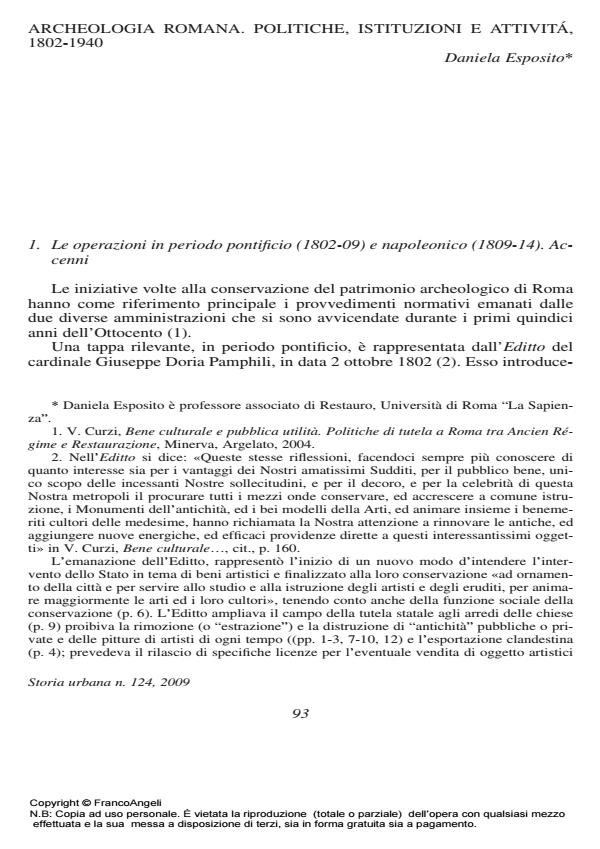Archeologia romana. Politiche, istituzioni e attività. 1802-1940
Titolo Rivista STORIA URBANA
Autori/Curatori Daniela Esposito
Anno di pubblicazione 2010 Fascicolo 2009/124
Lingua Italiano Numero pagine 29 P. 93-121 Dimensione file 10009 KB
DOI 10.3280/SU2009-124004
Il DOI è il codice a barre della proprietà intellettuale: per saperne di più
clicca qui
Qui sotto puoi vedere in anteprima la prima pagina di questo articolo.
Se questo articolo ti interessa, lo puoi acquistare (e scaricare in formato pdf) seguendo le facili indicazioni per acquistare il download credit. Acquista Download Credits per scaricare questo Articolo in formato PDF

FrancoAngeli è membro della Publishers International Linking Association, Inc (PILA)associazione indipendente e non profit per facilitare (attraverso i servizi tecnologici implementati da CrossRef.org) l’accesso degli studiosi ai contenuti digitali nelle pubblicazioni professionali e scientifiche
Roman Archaeology. Politics, institutions, interventions, 1802-1940 - Archaeology, Rome, archaeological parks, historical center The settlement of archaeological sites and areas in the territory of Rome and their relationship with the urban context, which has been developing and consolidating for centuries, has been the focus of urban planning and design activities mainly in the last centuries. This activity increased rapidly with the numerous excavations carried out under the papal influence and during the French domination in the 18th, and in particular, in the 19th and 20th centuries. This settlement had a diversified impact on pre-existing constructions. In some cases, the memory of Roman traces was preserved as a sign that could be understood over the centuries. In other cases, the relationship between the older constructions and later transformations concerned a larger and more complex area in the city, characterised by the massive presence of Roman structures with a partial material conservation of pre-existing constructions in squares, road traces and so on. Different cases of urban transformation are settlements or creations of archaeological sites often followed massive clearing actions for reasons related to the embellishment of the city or for ideological or representative reasons. A new idea of ‘urban decorum’ was advanced and it generated a sort of isolation of the archaeological structures which they wanted to improve. The relationship between these isolated structures and new road traces was ensured, following the tradition of time, by a system of gardens and green areas.
Daniela Esposito, Archeologia romana. Politiche, istituzioni e attività. 1802-1940 in "STORIA URBANA " 124/2009, pp 93-121, DOI: 10.3280/SU2009-124004